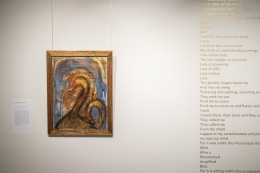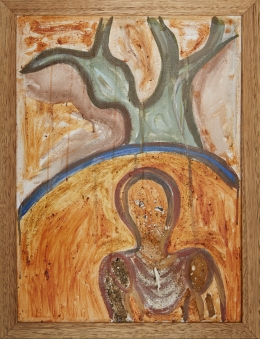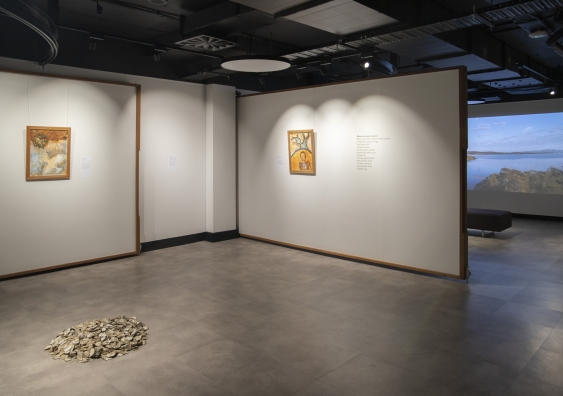Worlding With Oysters bridges the gap between art and science
When considering the Sydney rock oyster, its artistic qualities may not be the first thing that come to mind.
However, Tasmania-based artist Dr Sarah Jane Moore saw not only the inherent beauty of the oyster, or Bandangi, but its cultural significance.
The result is Worlding With Oysters, an exhibition presented both in the UNSW Main Library Exhibition space and online, in which Dr Moore presents a collection of poetry, songs and artworks.
The collection came together from Dr Moore’s observation and interpretation of the research of Dr Laura Parker, Indigenous Scientia Fellow in the School of Biological, Earth and Environmental Sciences, who aims to ‘future-proof’ natural oyster populations through building resilience to ocean warming and acidification.
This dialogue between art and science opens up a space to embrace Indigenous knowledge, understanding and wisdom, where the revitalisation of cultural practices is a call to arms to care for Sea Country.

The exhibition brings together artwork, poetry and song to tell the story of the Bandangi. Photo: UNSW Library
Dr Moore says she is passionate about conservation and ensuring the art she creates is meaningful.
“Meeting [Dr Parker] and listening to the dire projections about the plight of Sydney’s oysters inspired me to shift my artistic practice to embrace arts activism, science communication and artworks for change,” she says.
“I have been working on this current exhibition during lock down and the momentum of the oysters had their own power over me.
“All the way from Sydney Harbour and Port Stephens those oysters called to me and urged me to hear their voices, carve them out a future and make them visible.”
Dr Parker says the collaboration has brought new focus to her research.
“Working with Sarah Jane has been such an enjoyable and rewarding experience,” she says.
“I’ve been much more focused on the scientific importance of oysters but taking Sarah Jane out with me to visit the oyster leases and seeing her reaction … really gives me a greater appreciation for how important they are.
“By using Sarah Jane’s artwork to display what I’m finding in the laboratory, we can show the importance of oysters, what we need to do to protect them, to the broader community and actually make a change.
“By doing this we can work together to solve the problem of climate change for oysters and potentially other marine organisms.”

The collaboration between Dr Moore and Dr Parker allowed both to understand more about their own work. Photo: UNSW Library
Curator, Special Collections and Exhibitions at UNSW Library, Jackson Mann, is excited to share this exhibition with the community and spread the message of urgency it communicates.
“Sarah Jane’s work isn’t just about using art to bridge scientific research and the idea of caring for Country – it’s about showing us that caring for Country is connected to all aspects of our lives,” he says.
“In this exhibition the oyster stands for something much greater – it speaks to the urgent need to embrace Indigenous understandings of Sea Country and live our lives more fully connected to the world around us.”
The Bandangi is vulnerable to change in its environment caused by climate change and coastal development – by the end of the century, oceans will be warmer and have higher concentrations of carbon dioxide and many sea creatures will struggle to adapt to these fast-changing conditions.
Dr Moore is delighted to be able to share her work with the wider community and hopes people will appreciate the elegance of the Bandangi and understand its deeper significance.
“I love beauty and strive to create moments of reflection, beauty and grace,” she says.
“When viewing my show I would like those who encounter my work to find moments or rest, reflection and humility.”
Worlding With Oysters is on display on Level 5 of the UNSW Library and online and runs until 13 November 2020.

